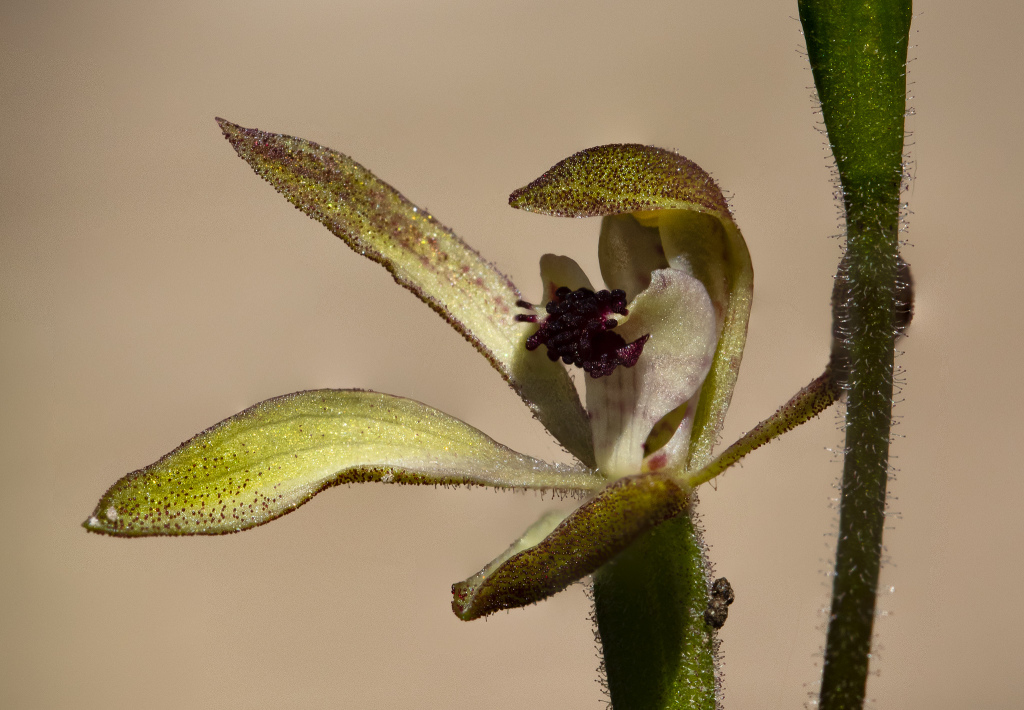Caladenia transitoria
D.L.JonesFlowering plant slender, 8–16 cm tall, usually purplish. Leaf linear, 6–10 cm long, 1–2 mm wide. Flowers 1–3, cream-green to yellowish green; ovary 5–7 mm long; perianth segments 7–10 mm long, 1.5–3 mm wide, acute, both sides with scattered glands; dorsal sepal linear-obovate, more or less hooded, curved at about the middle, embracing the column; lateral sepals and petals spreading or curved upwards, narrow-elliptic to narrow-lanceolate, asymmetric, lateral sepals broader than petals, divergent. Labellum on short claw, 3-lobed, 5–6 mm long, whitish to pink, with red or purple transverse bars; lateral lobes with a wedge-shaped anterior corner, entire; mid-lobe triangular, recurved, glandular, dark purple, fringed with stalked, granular-headed, purple calli becoming sessile towards apex; lamina calli in 4 crowded rows, extending from base to apex, becoming sessile near apex, heads purple and granular. Column incurved, narrowly winged at base, expanded above, with red or purple markings; anther with short point. Flowers Oct.–Nov.
VVP, GipP, OtP, Gold, CVU, NIS, EGL, EGU, WPro, HSF, HNF, Strz, VAlp. Widespread mostly in eastern Victoria in heathy or shrubby open forest and woodland on well-drained sandy loams.
Distinguished from Caladenia iridescens by its smaller, less colourful flowers.
 Spinning
Spinning


